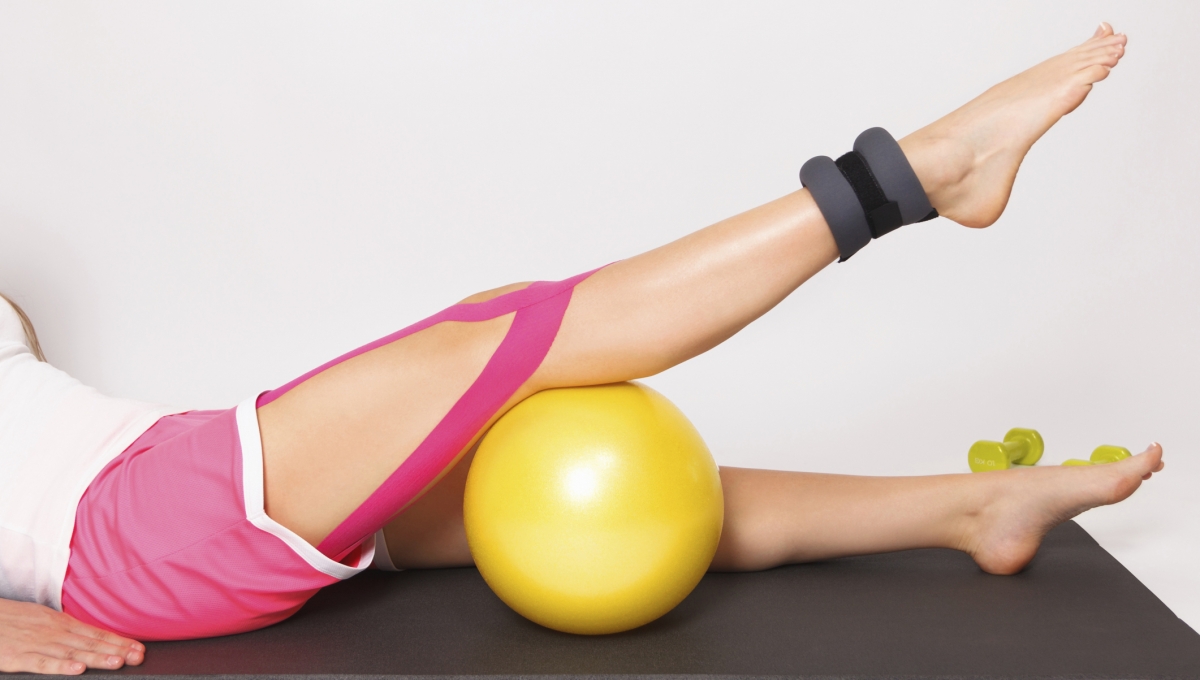Have you ever seen brightly-coloured tape wrapped around athletes’ shoulders and wondered what they are? That’s kinesiology tape! It is one of the most effective therapeutic techniques for sore or injured muscles and joints. In fact, its benefits are so extensive that they are sometimes referred to as “magic tape.” So how does taping work? How can you benefit from using kinesiology tape?
What Is Kinesiology Tape?
Kinesiology tape is made of stretchy, breathable cotton fabric, with thickness and elasticity similar to human skin. It was developed in the 1970s by Kenzo Kase, a Japanese chiropractic doctor who wanted to create something that is just as elastic and stretchable as skin.
When applied correctly, kinesiology tape can stay on the skin for three to four days. The adhesive backing is also usually water- and sweat-proof so that the tape can withstand showers and high-intensity exercises.
How Does Kinesiology Tape Work?
Kinesiology tape is designed to support the injured area without limiting blood and fluid flow or the full range of movement. When adhered to the skin, the tape contracts with the body’s natural movements and gently pulls the skin’s upper layers away from the tissues below. This lifting action creates extra space, which allows for better blood and lymphatic fluid circulation. This results in many benefits, including pain relief, reduced swelling and faster recovery from bruising.
Benefits Of Kinesiology Taping
Reduced swelling and inflammation– kinesiology tape creates space between the skin and the injured tissues underneath. This space facilitates blood flow and lymphatic fluid circulation, which means that the body can drain the fluid build-up away. Waste products will also be removed, and inflammation will go down as a result.
Pain relief– there are pain receptors everywhere in our body, from the skin to the deeper layers of muscles and connective tissue. When skin is lifted away from the injured area beneath by kinesiology tape, pressure on local pain receptors is released, and the feeling of pain is reduced as a result.
Accelerated muscle recovery– after a long and hard workout session, most of us experience muscle fatigue and soreness that prevents us from training the next day again. Kinesiology tape assists in waste product removal and efficient oxygen delivery to muscles so that they can work harder for longer.
Reduce bruising– a bruise form when there is an accumulation of blood under the skin. You can see a dramatic reduction in bruises with kinesiology taping as it enhances blood flow under the skin.
Muscle and joint support– kinesiology tape can provide posture and muscle support without restricting movement. If you have unstable joints, slight pressure from kinesiology tape offers the necessary support to exercise the small muscles surrounding the joint so that you can move with confidence again. Unlike other therapeutic devices that can lead to dependence, kinesiology tape teaches the body to be independent and self-sufficient.
Re-injury prevention– kinesiology taping is an effective way for the body to re-learn correct movement patterns to prevent future injuries.
Allow activity while injured– this is an excellent benefit for competitive athletes who want to continue training or competing as their mild injuries heal. Kinesiology tape can prevent muscle over-contraction or overstretching. Its pain relief and anti-inflammatory benefits also help athletes move more comfortably.
Who Can Use Kinesiology Tape?
Anyone with soft-tissue injury or pain, from a seasoned athlete to an elderly with joint disease, can benefit from kinesiology taping. For example, if you:
- Work at a desk or have a sedentary lifestyle and experience upper back or neck pain
- Work a professional that involves hard physical labour or repetitive movements, such as construction workers, mechanics, factory workers
- Are an athlete or physically active
- Suffer from joint, muscle or tendon injuries due to an accident or chronic disease
- Suffer from pain due to poor posture
Some commonly taped areas include:
- Back
- Calves
- Elbow
- Wrists
- Knees
- Shoulders
- Neck
What’s So Different About Kinesiology Tape?
Kinesiology tape has unique properties and benefits that set it apart from traditional taping methods.
Conventional athletic tape is stiff and designed to keep the injured area tight and immobile. As a result, movement, as well as blood and lymphatic fluid flow, are restricted. Conversely, kinesiology tape allows the injured area to move and bend so that you won’t feel stiff or sore during the healing process. Also, the traditional tape can only be worn for a couple of hours at a time because of its restrictive nature, while you can wear kinesiology tape for days at a time.
Will Kinesiology Tape Harm My Skin?
Most kinesiology tapes on the market are latex-free and hypoallergenic, so they shouldn’t affect your skin negatively. If you are concerned or have sensitive skin, you can apply a test strip to ensure your skin is tolerant of the material.
How Do I Apply Kinesiology Tape?
We recommended that you consult a professional trained in the proper application of kinesiology tape before trying to put it on by yourself. There are many ways to apply the tape depending on your goals and the specific injured area. Your physical therapist or kinesiologist can show you how to use the tape correctly so that you can maximize its therapeutic effects.
There are also high-quality kinesiology tape in pre-cut shapes on the market to make the application faster and easier.
Overall, kinesiology tape is an excellent therapeutic technique for those with soft-tissue injuries anywhere on the body. However, it should be noted that taping is not a replacement for physical therapy or medical attention. You should always consult a medical professional if you have an injury or are experiencing any pain.
Author’s Bio
Kristy Ngai is a content writer for BreezeMaxWeb that helps businesses showcase their brand through enticing copy. When she’s not working, you can find her playing net in a local beer league or biking around the city.

















